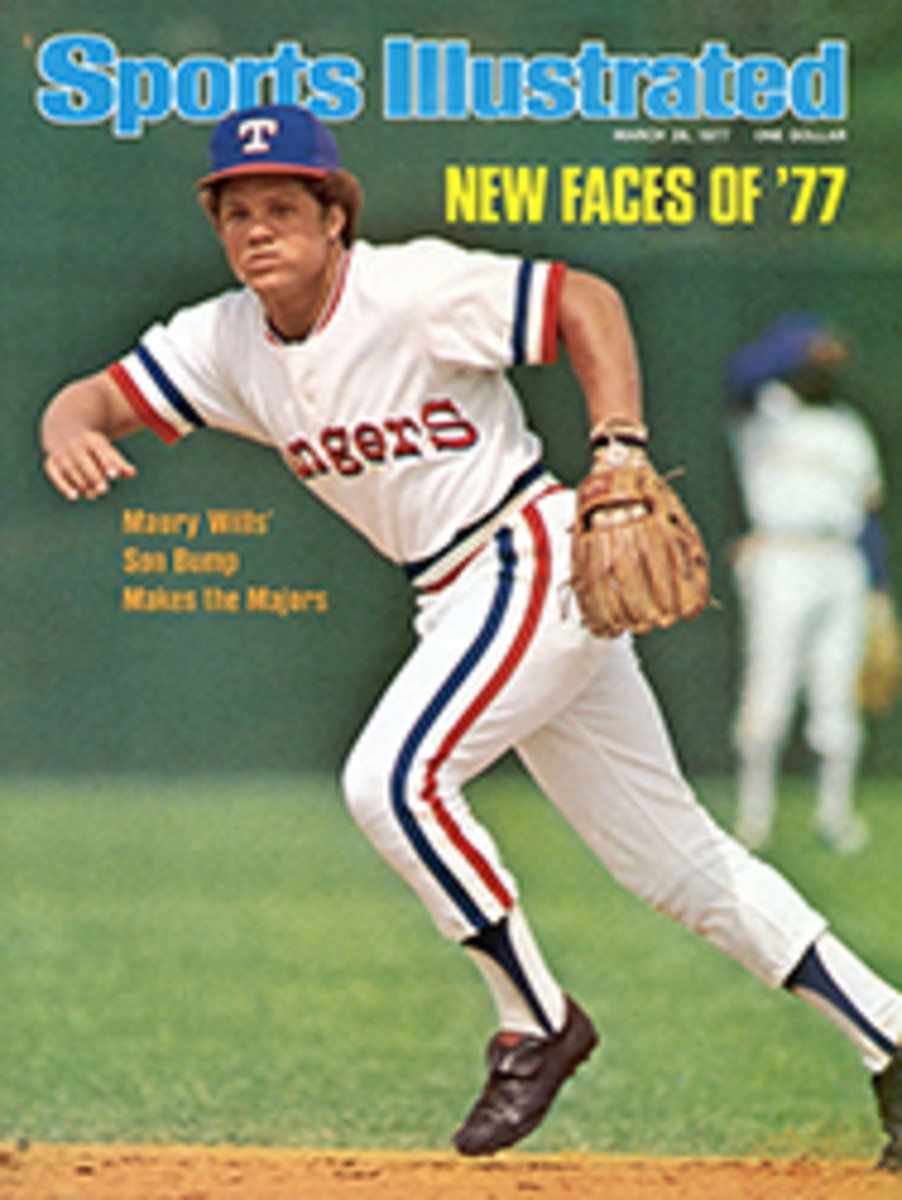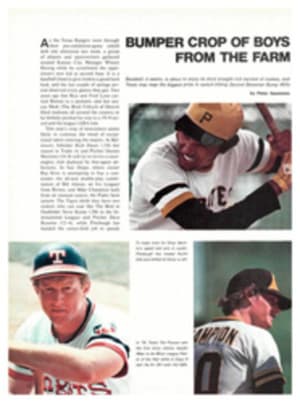
In a class all by itself—for now
If Sawgrass is a golf course instead of a torture chamber, you couldn't get very many touring pros to agree. If Sawgrass is not Vincent Price's front yard, then what is it? An alligator farm? A reptile exhibit? Such thoughts came frequently last week during the funniest four days—ever—in the long life of the PGA tour, when an event called the Tournament Players Championship had what in effect was its real inaugural. Another of those under-30 guys survived to be pronounced the winner. Mark Hayes. But the true victor of the tournament played near Jacksonville was the course, Sawgrass, because when last seen most of the best golfers in the world were still poking around in the dunes and marshes looking for their egos.
Maybe it was appropriate that Mark Hayes, who is one of the most invisible players on the tour, became the champion. You had to hide and sneak around Sawgrass to endure it. For three rounds and practically half of Sunday's final 18, Hayes wasn't even known to be in the tournament. An even more obscure young man named Mike McCullough had been leading since his opening-day 66, but he was surrounded by a rather fashionable cast, and it was expected that eventually McCullough would go the way of the coots fluttering up out of the landscape. And then Tom Watson or Hale Irwin or Jack Nicklaus would take the $60,000 first prize and the title of a tournament that yearns to be thought of as something at least as sacred to the game as Hell Bunker at St. Andrews or PGA Commissioner Deane Beman's leisure suits.
On Sunday when McCullough did, in fact, begin to stumble, and Watson went to the last nine holes with a two-stroke lead, all seemed right with the world. But then these weird things started to happen, as they had been happening all week. Watson, who had tap-danced so beautifully through the bunkers and other menaces of Sawgrass for so long, got his comeuppance. He bogeyed four out of five holes as he started off on the back nine with a series of bad shots and bad breaks, and the next thing anyone knew Hayes grabbed the lead with, as someone mentioned, a flurry of charging pars. Hayes, who at least knew how to win golf tournaments—he had won twice on the tour last year—finished with a relatively uneventful par 72 for a total of 289, one over par, and took the title with what appeared to be unflappable ease. If Bruce Devlin (low announcer, low architect, low Australian, low plumber) and Hale Irwin had only driven into the fairway and not the water on the last hole, the outcome could have been different. But both bogeyed what many considered a birdie hole.
No one can tell much about Mark Hayes. He certainly has a fine game, a solid swing, but he goes along in one of those brimmed hats, and some say the most interesting words he ever uttered were "thank you" when his high school bestowed a diploma on him. But Hayes didn't have to say much at Sawgrass. Conceivably, his words couldn't have been heard, anyhow, with all the yelling by the rest of the field. Right up to the last splash.
It was just as well that a guy won who played under the wind and away from the crowd, for he didn't distract from the important thing, which was what will become of the TPC. The championship has had a bruised and battered past. From the beginning it claimed "major" status, insinuating that it deserved to be thought of in the same class with the Masters, the U.S. and British Opens and the National PGA. A sort of Grand Slam Plus One. It didn't ask anyone, by the way. It just claimed it, primarily on the basis that the tournament was a big-money event to be played on tough courses with the best field you could assemble. This was all true. But major status will only come with age and refinements that will be made over the years, if at all. Only public taste and to some extent the attitude of the press will ultimately decide the proper place of the TPC. Possibly the world doesn't need a fifth major, and it will have to settle down on that plateau of annual competitions that are thought of as "significant." Better than a Doral or a Kemper, of course, but hardly a Masters. Somewhere in between.
There is another possibility, one the PGA finds utterly revolting. The TPC could one day replace the PGA Championship in the minds of those who concern themselves with what is major and what is not. The TPC has the format to do so because it is designed to keep out, shall we say, the riffraff.
There is only one way to get into the TPC and that is to be one of the current best golfers on the planet, one of the top 144 money winners during the previous year. Compared to the PGA, the kind of players this eliminates is fascinating. The TPC does not have such rough elements as the champions of the 39 PGA sections, the 25 low scorers and ties in the last PGA Club Professional Championship, all former PGA champions (alive or dead) and the resident professional. In brief, no club pros, no accidents, no legacies.
All this was noble and seemed creative on the planning board, but then came the time to hold the tournament. The long-range scheme was to roam about the land holding the TPC on only the best and most testing courses, the assumption being that every country club would be delighted to host it, as giddily happy as they would be to honor the U.S. Open or the PGA. The tournament started off in Atlanta in 1974 and was fortunate enough to get Jack Nicklaus for a winner. Jack said he won "just in case" the tournament became a major. There were two problems, however. It rained. And the event was scheduled far too late in the season—August—to generate much attention.
The second TPC went to Colonial in Fort Worth, and again it was played in August. Al Geiberger shot some spectacular golf on the banks of the Trinity River, but in terms of atmosphere the event seemed to be nothing more than a Colonial National Invitation that had forgotten its dates.
In 1976 the TPC found the time of year it wanted—ahead of the Masters—and got Inverrary in Fort Lauderdale to act as the host club. It even got Nicklaus for a winner again. But it also rained again. The final round had to be played on Monday, blowing a big TV audience. And by then everyone realized that if the TPC kept traveling around it was never going to be anything more than the Atlanta Classic, the Colonial or the Jackie Gleason by another name. And what would happen if, on top of this, Nicklaus stopped winning it?
What all of this wrought was Sawgrass. Sawgrass-by-the-sea. Sawgrass-in-either Jacksonville-or-Ponte-Vedra. Sawgrass-on-the-dunes-left-over-from-Hurricane-Dora-with-alligators-to-boot. Whatever you wanted to say about the course, old Sawgrass did one thing. It finally attracted attention to the Tournament Players Championship, and when the competitors have had time to think the four rounds over and get the sand bathed off and cure their windburn, they will probably be grateful.
By Sunday night Sawgrass had contributed heavily to the lexicon of the game. The tournament started on Thursday with the field accusing Communists of plotting the par-5 4th. The hole is a 527-yard terror, narrowly sculpted among brush, dunes, gnarled timber and swamp. It demands radar from the tee, a minister and choral group for the second shot, a snorkeling outfit thereafter and a considerable amount of cussing. You can either lay up with a four-iron and then pitch to a box top, or you can go for the green and more than than likely wind up with a double bogey or worse.
Par-5 holes rarely play over par in a PGA tournament, but on that first day the 4th played to a dandy total of 22 over par. There were so many horrible numbers posted, the players began to laugh and see who could think up the best lines in the locker room. They didn't make scores on the hole, they said, they made estimates. Roger Maltbie probably put it best: "It's not so bad. It's like having a tooth pulled with no anesthetic."
The outrage about the hole was good for Sawgrass. Suddenly, the place had a tourist attraction, a genuine monster that golfers everywhere should want to see. One can only hope that when changes are made in the 4th to allow room for a gallery, the design of the hole won't be tampered with.
The second thing that made this TPC memorable was Friday, when somebody turned on the fan. It was a marvelous day for anyone who hated golf and touring pros. A 25-to-30-mph wind started whipping across the premises in mid-morning, and the wind, combined with the dangers of the course—water, sand, greens of shallow depth, scrub, etc.—added up to the most rugged test of golf since Walter Hagen tried to chip with a swizzle stick.
Exactly 50 men in the field shot 80 or higher. One fellow actually confessed to a 91 (John Lister), and one did not (Homero Blancas), although 91 is what he shot. Blancas was disqualified after failing to sign his scorecard. The average score in the afternoon was 81. All the players could do was laugh. There were lines like John Schlee's, "If the course was an airport, it would be closed." And Allen Miller saying, "There won't be anyone left on Sunday but Mr. W.D. and Mr. D.S.Q." Meanwhile, Bruce Lietzke sat in the locker room trying to figure out a "worst ball" score among the field. The worst score on each hole from anybody. He got the number up to 131. Which was when Don Massengale came in with an 84 and couldn't improve on Lietzke's worst ball total.
The round was summed up by Cesar Sanudo, one of the day's 14 dropouts. Hitting his third drive at the 9th hole, after the other two had gone into the water, and seeing this one take a huge, soaring turn toward the same hazard, he started walking in. "It's the first time I ever withdrew when the ball was in the air," he said.
Even without a vicious wind, with only the normal breezes, which is how the course played for three of the four rounds, Sawgrass gave the players a flogging such as they have rarely experienced. They were thrashed as they were in a couple of recent U.S. Open championships, those at Pebble Beach in 1972 and Winged Foot in 1974. Not bad company for Sawgrass, which tortured the professionals even worse. There were all sorts of accident tolls. Such as one-sixth of the field quitting. Such as 57 players, more than two-thirds of the field, failing to break 300. Such as only one man, the quiet Mark Hayes, managing to break 290.
What basically happened on the non-links of Jacksonville is that a new verb joined the language of golf. From now on, when something terrible happens to a touring pro, he will no doubt say he got Sawgrassed.
PHOTO
The best approach was to be invisible, and Mark Hayes managed that and a one-over-par victory.
TWO PHOTOS
Raymond Floyd hacked out of the underbrush to shoot a respectable 74 but he and fellow pros Hayes and Tom Watson often stood on the brink.

